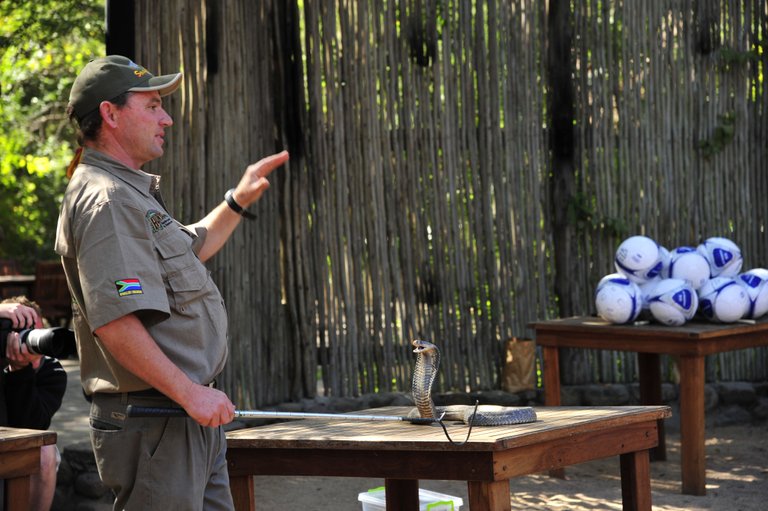The Snouted Cobra - One of South Africa's Deadly Dozen Snakes. There are five species of Cobras found in South Africa. This is the largest of them. (Not the Longest - That is the Forest Cobra, which is longer but also thinner!). A bite from this snake can kill a man in a few hours. The spreading of the hood is a threat display.

HOLY SHIT
nice and steady your work ..
please post I have to increase the spirit in steemit
a deadly snake, if not quickly get medical treatment within a few hours we can die (dead)
wow
never knew about this thanks for sharing such an educative post
Identification:
The snouted Cobra can be identified by the following features; a particularly large hood, a dark throat band, its dark brown or blue black colouration (however some individuals have a banded colouration) and its habit of basking in close proximity to its retreat. It grows to an average length of 1.8 meters but can be as long as 2.5 meters in length.
Distribution and habitat:
This snake is present in the following areas Limpopo, the North West, northern Gauteng and northern KwaZulu-Natal. It is also found in southern Mozambique, eastern Botswana and Zimbabwe. Its favoured habitat includes savanna, lowveld and bushveld areas. It is also able to climb trees.
Food:
Feeds on toads , rodents , birds (especially poultry), other snakes (especially Puff adders).
Predators, parasites and disease:
It is fed on by birds of prey (particularly secretary birds and snake eagles ) and other snakes
Reproduction:
Oviparous (egg laying), lays between 8 and 33 eggs in early summer.
Longevity:
This cobra species has an average life span of 20 years.
Medical importance
The Snouted cobra has a very powerful and potentially fatal neurotoxic venom which causes respiratory failure and intense pain in the affected limb. Luckily an antivenom is available.
Links:
Naja annulifera PETERS, 1854 (The Reptile Database - JCVI)
References
Broadley, D.G. 1983. FitzSimons' Snakes of Southern Africa. Delta Books, Johannesburg.
Marais, J. 2004. A Complete Guide to Snakes of Southern Africa. Struik Publishing, Cape Town.
(C) Biodiversity explorer
Creepy
How much more if its live?
Try rubbing noses with a cobra 😵
good post friends @mambaman
Amazing Post I like that @womenchildcare
(Women & Child Care Organization)
Amazing